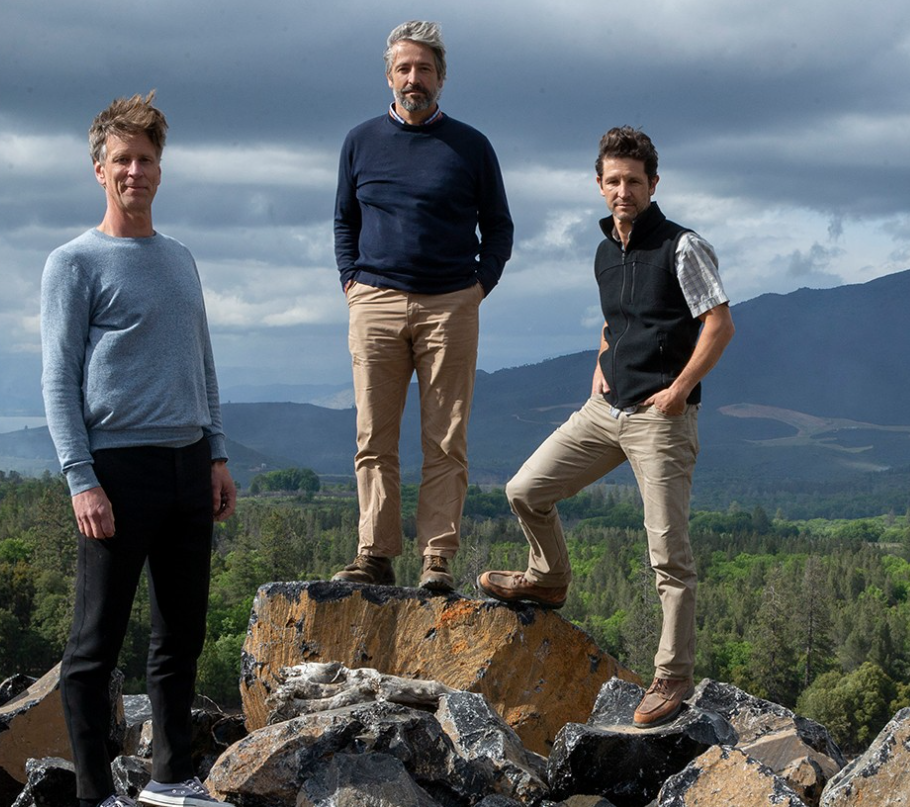- Handley Chardonnay, Anderson Valley, CA, $27
- Bodegas LAN 2019 Rioja “D-12”, Rioja Spain, $26
- Mas de Gourgonnier Rouge, Les Baux France (Certified Organic)$22
- Vara, American Silverhead Brut, California and Priorat, $21
- Hoss Cabernet, CA $32
- Obsidian Wine Co Poseiden Vyrd Pinot Noir, $41
1. Handley Chardonnay, Anderson Valley, CA, (Organic) $27
The Wine
Geeky Notes: This wine is made from Handley’s organically-farmed (CCOF Certified) Handley Estate Vineyard, a field blend of two clones of Chardonnay – the Robert Young clone and the Burgundian clone ’76’.
Tasting Notes: Aromas of citrus blossom, cooked apples, warm toast, caramel, and nutmeg. On the palate look for hints of crisp lime, ripe pineapple, tart Gala apples and toasted almonds. The wine makes a soft entry, grows into a round and full mid palate, and finishes crisply, with lingering fruit notes.
Barrel fermented with regular lees stirring through completion of fermentation, then aged for 8 months in 100% French oak barrels (20% new). About one third of this was put through malolactic fermentation to add complexity and that round mid-palate mouthfeel, and to provide a counterpoint to the wine’s natural crispness.
1,404 cases produced.
Alcohol: 13.2% ABV
Acidity: TA 5.0 g/L, pH 3.55
The Winery
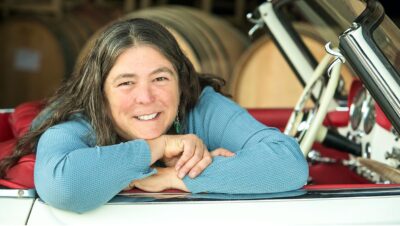
Milla Handley, 1951 – 2020
Founding winemaker Milla Handley passed away suddenly and unexpectedly three years ago due to COVID. A woman who overcame so many obstacles in her long career, her unexpected passing came as a huge shock to the Anderson Valley, a small and tightly-knit community, where Milla had been the “Pioneer Queen” for almost 40 of her 68 years.
2. Bodegas LAN 2019 Rioja “D-12”, Spain, (Sustainable) $26
The Wine
Produced with selected vi nes from small parcels in the Rioja Alta and Rioja Alavesa, LAN D-12 revives the Riojan tradition of choosing their best tank to keep to drink themselves! D-12 refers to the tank that was selected.
nes from small parcels in the Rioja Alta and Rioja Alavesa, LAN D-12 revives the Riojan tradition of choosing their best tank to keep to drink themselves! D-12 refers to the tank that was selected.
GRAPE VARIETIES: 100% Tempranillo
TASTING NOTES: The wine begins with an inviting, bright cherry color and segues into aromas of licorice, ripe red fruits with dairy nuances (cream more than cheese), toffee, vanilla, sweet pie spices and cocoa. On the palate it shows harmony between the fruit and the toasted notes that evolves over and over again on the palate. Round tannins lead into a good long-lasting finish of red fruit and liquorice.
VINEYARDS: This year the wine came from three plots: El Cementerio (Viñaspre), Los Valles (El Cortijo), and La Fonsagrada, (San Vicente de la Sonsierra), with vine age ranging from 30 to 45 years.
WINEMAKING: Fermented in stainless steel tanks at a controlled temperature no higher than 77 degrees (F) – cool enough to preserve the wine’s beautiful aromatics while still enabling full color extraction from the skins. Micro-oxygenation was allowed while the wine was still macerating on the gors lees. Finaly, malolactic fermentation balanced the tannins so they now display a silky mouthfeel in the bottled wine.
AGING: Twelve months in new American and French oak barrels followed by 1 year of rounding in the bottle prior to release. The American oak was sourced in the Appalachians and the French oak in the forests of Chateauroux and Loches. Continue reading for more about Bodegas LAN’s unique hybrid barrel program!
The Winery
Modern wines from Rioja have become known for their use of American oak barrels. Until recently, it was a reliable marker for these wines. But, known for lending distinctive notes of coconut and dill to wines, American oak barrels have their fans as well as their detractors.
LAN takes a different path. In order to create wines that faithfully reflect the winery’s old-vine vineyards, they’ve created a very cool and unique barrel regimen.
First, take a look at their barrel room (right). It involves an atomated system of stacking and racking that makes efficient use of the temperature-controlled space.
But Bodegas LAN are also known for integrating oak from various forests into their barrels, using oak from America, France, Russia, Hungary and the Pyranees. Some of their barrels are even hybrids, using staves from American oak and heads from French oak, for example. They then select the barrels that best compliment each particular wine, using the wood’s aroma/flavor profile as their guide:
- French oak. From different forests in central France (Allier, Troncáis, Jupille, Blois…), these barrels provide great aromatic complexity, with delicate notes of spice (clove, cinnamon), touches of menthol, smoke and cocoa. It adds a considerable amount of tannins, giving great structure on the palate.
- American oak. Sourced in Ohio and Missouri from the Appalachian forests, it adds intense aromas of vanilla, coconut and aromatic plants. See prior note on coconut/dill.
- Russian oak. From the Caucasus and the Republic of Adygea. It is similar in aromas to French oak but less pungent, respecting the primary aromas of the grape.
- Hungarian oak. Aromatically similar to French oak. In the case of Tempranillo, it adds slightly more lactic (dairy) notes.
- Pyrenean oak. It is high in polyphenols, adding vanilla, caramel, almond, clove and resinous notes. It is the latest type of oak to be added to LAN’s ageing process.
3. Mas de Gourgonnier Rouge, Les Baux France (Certified Organic) $22
The Wine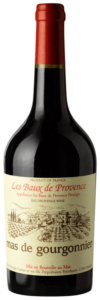
Produced by the Cartier family (no, not THAT Cartier), Luc, Eve (Luc’s daughter) and Lucienne, these wines combine the richness and intensity of top Rhone or Bordeaux with a crystal-clear and unmistakable expression of Provençal soil.
The wine is a blend of Grenache, Syrah and Cabernet Sauvignon (50% / 24% / 26%) from 20-30-year-old vines that have been organic since their origins in the 1950s. Elevation was in a combination of stainless-steel tanks and well-used French casks before being bottled (unfined / unfiltered). The fun and distinctive, squatty bottle is the same style used for the family’s first wines in the 1950s.
Tasting notes: Dark garnet in color, the wine offers aromas of blueberries, bramble fruit, wisps of smoke and spice. On the palate we found dusty black fruits (plum, blach cherry), pipe tobacco, leather, lavender and the other tantalizing herbal elements known as “garrigue”.
The Winery
Les Baux, a mountainous town in Southern France, takes its name from the region’s bauxite mines, a critical element in the production of aluminum, but also essential for various munitions critical to the wars of the last century. The area has a rather grusome history, with a mountain-top castle whose dining room looked out over the perch from which valley floor travellers who couldn’t afford the tariff were thrown into the abyss for their trespassing, and for dinner time entertainment, apparently.
Not to worry, the wines are far more gentle and civilized.
This winery is a perfect example of why I become so amused by the success of Johnny-come-lately brands shouting about their “Natural Wine” bona fides (I’m looking at you, Dry Farm, Cameron, Banks, Harden…). Like many, many, MANY small old-world producers, Gourgonnier has been following rigorous natural farming techniques for decades, not because they need to shout about it, but because that’s just who they are. The Cartier family has been growing and selling organic for almost two centuries. It’s just part of who they are. Their “Brand”, though use of such a word would almost surely result in a quizzical look from the Cartiers!
4. Vara, American Silverhead Brut, California and Priorat (organic/biodynamic/sustainable) $21
The Wine
In many ways, it feels as if this is a second chapter that took 25 years to write. It started in 1999 when, sitting at a friend’s wine bar in San Francisco, I was handed an unexpected glass of sparkling wine.
What’s this? I asked.
“Taste it and tell me”, she said.
Hmmm, nice and crisp, fine bubbles, brioche yeasts with a clean finish… I would guess it’s an over-achieving entry-level or maybe a mid-tier Champagne.”
I was wrong, as it turns out.
I’d just been introduced to an exciting but little-known domestic sparkling wine, fermented in bottle, that was from… wait for it… NEW MEXICO, of all places. It was really good and surprisingly affordable and it was called Gruet, after the French family with roots in Chamapgne (Champagne Gruet et Fils). Laurent Gruet was the family member who’d left Champagne for the hills of New Mexico and piloted the program.
But in 2014, Laurent sold Gruet to start a new venture – Vara – just two short years ago this month. It too is surprisingly good and affordable – Laurent hasn’t lost his magic touch, clearly. But he has some great help as well – the Lindquists, both Bob (Qupé) and Louisa Sawyer-Lindquist (Verdad, a producer of CA wines from Spanish grapes) are partners in Vara. Like Laurent, Bob recently sold Qupé and launched his own venture with Louisa. Together, they’ve partnered with Laurent to create the wines of Vara using grape sources the three of them have developed over their many decades.
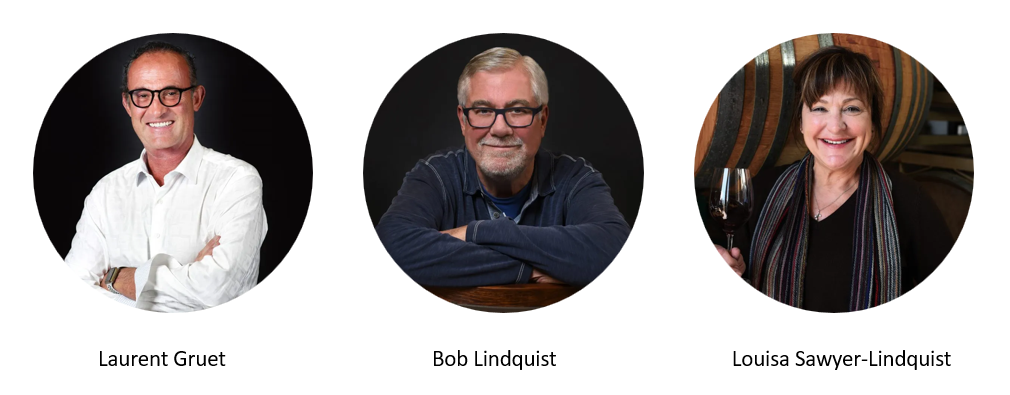
Whether the name – Vara Silverhead – refers to the silver metal cap between the cork and the cage, or Bob’s increasingly silver head of hair… who knows. Just enjoy the wine, newly released in time for the holidays. This will be a wine you’ll want to serve, both for the pleasure it delivers and the story that comes with it.
By the Numbers:
10% Chardonnay – Central Coast AVA, CA USA
15% Xarel-lo/Macabeo – Alt Penedès DO, Spain
5% Pinot Noir – Lodi-Woodbridge AVA, CA USA
5% Pinot Noir – Central Coast AVA, CA USA
TA: 8.6 / pH: 3.25 (close to grapefruit juice, for some comparison)
ABV: 12.5%
Bottled: February 2023
Winemaker: Laurent Gruet
5. Field Recordings ‘Hoss’ Cabernet, Paso Robles CA $32
The Wine
I don’t know this for a fact, but suspect this wine was named for Hoss, Ben Cartwright’s rather large son on the show Bonanza. A popular Western from the 1970s, Bonanza featured the wealthy Cartwright family, Ben was a widower whose son, Hoss (Dan Blocker), was known for his brawn.
Just like this wine – if you like big California cabs, this wine is for you. Despite its relatively modest 13.9% ABV, the wine is no shrinking violet.
Tasting Notes: Look for aromas and flavors of blueberries and black fruits, cocoa and maybe a touch of menthol, all topped by spice notes including ground black pepper and mocha. Food pairings? Andrew Jones suggests “stuff with a bone in it”, which leaves the wine open to a lot of menu options.
The Winery
Named Winery of the Year by the “Next Wave Wine Awards”, Field Recordings ticks all the boxes for natural wines – sustainable farming, native yeast fermentations, no additivies but for minimal sulfites and vegan production practices. But what I like most about their wines is that they are ‘a thoughtful reflection of a specific time, place or person’, as described by Next Wave Wines.
Winemaker/Owner Andrew Jones is at the helm of this mid-sized winery (about 40,000 cases per year). As a vineyard consultant with his fingers in many of California’s best Central Coast sites, Andrew has access to fruit from some of the best known and some of the smallest “waiting to be discovered” vineyards.
Among it all, Andrew’s developed a reputation for being able to identify diamonds in the rough, vineyards whose fruit can be better than its price and reputation would suggest. That is the foundation for Field Recordings!
6. Obsidian Wine Co Poseiden Vyrd Pinot Noir, $41
The Wine
TASTING NOTES
Fresh and approachable, the Estate Pinot Noir captures the classic character of Martini Clone Pinot Noir from the Carneros appellation – a delicate, pretty wine with a medium body, fresh acidity, and beguiling complexity. Hungarian oak adds a warm spice and earth component to the fruit’s classic aromas and flavors of rose petals and bright red cherries, with some tea leaf and herbal notes from the whole cluster stem contact.
HISTORY
Poseidon Vineyard, located at the confluence of Carneros Creek and the Napa River, was planted in 1973 by the Molnar Family to the Burgundian varietals: Pinot Noir and Chardonnay. The maritime environment of the Carneros grape-growing season delivers cool, foggy mornings followed by warm days that nurture a slow ripening.
WINEMAKING
Obsidian’s Estate Pinot Noir vineyard is primarily planted to Martini clone Pinot Noir, with one small lot of Pommard 5 clone. The fruit was harvested by hand and fermented separately. 10% of the harvest was whole-cluster fermented for added complexity. Once fermentations were complete, the wines were pressed gently and aged in the Molnar family’s Kádár Tokaj oak barrels, 70% in 300-liter barrels and 30% in a single 3,000-liter upright oval cask. The oak used to make these barrels is depicted on the label, a smaller version of an actual wood block print.
These oversized vessels add the signature spiciness of Hungarian oak to the blend at lower concentrations than standard barrels, complementing the fruit character while retaining the pure, fruit-filled expression of Pinot Noir. Aged on lees and racked only once before bottling (wihtout fining or filtration) to maintain the desired weight and complexity on the palate.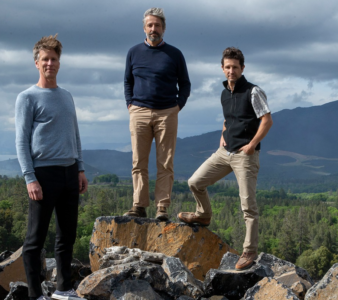
The Winery
The families behind Obsidian Ridge say they’re most at home when living on the edge. In 1973, Nicholas Molnar planted Poseidon Vineyard at the southern extreme of Napa Carneros, on what had been grazing land since the time of the missionaries.
He was among the first to farm this area which at the time was considered too cool to ripen wine grapes. For three decades, he grew chardonnay & pinot noir for the top sparkling wine houses in Napa Valley before producing still wines under their own label. When it came time for his sons to take over the family business, they felt there was an opportunity in another under-valued area within California – the red and volcanic soils of Lake County, north of Sonoma. That vineyard is home to their Cabernet Vines, while Posieden is the source for their estate Chardonna and Pinot.
Become a member of the “Classic Selections” Wine Club!


